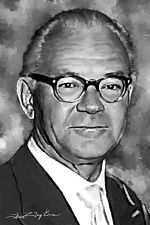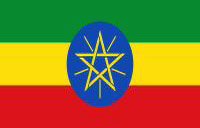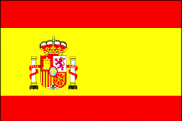
Georg Wittig Ph.D.
The Nobel Prize in Chemistry 1979
Nobel co-recipient Herbert C. Brown
Organic Chemist. Development of use of phosphorus into important reagents in organic synthesis. Wittig reaction. Mentored 300 graduate students, post-docs; provided close supervision for crucial experiments.
"Chemical research and mountaineering similar. To reach goal/summit, initiative, perseverance required. After hard work, great joy to be at goal/peak with its splendid panorama..."
Biography
By Dan Lednicer Ph.D. Organic/Medicinal Chemist
Nobel prizes in many of the sciences are awarded in recognition of some singular achievement. The Nobel Prize in Physics for example may be awarded to a relatively young scientist whose investigations provide a new insight to the nature of matter. The Nobel Prize for Chemistry covers the various specialized areas of this broad scientific discipline. Organic chemistry, that is, the chemistry of carbon compounds, comprises one of those disciplines. This field differs from many of the other sciences by the fact that it comprises of a large body of settled science. It is consequently unlikely that an organic chemist will come up with some singular achievement. The Nobel Prize in that discipline has not infrequently been awarded for work that has led to the development of new reagents which have made possible hitherto difficult transforms. Awards for new reagents are more often than not given years after the invention when the new method has come to be used routinely in the laboratory. In this case the 1979 Nobel Prize in Chemistry was awarded jointly to Herbert C. Brown and Georg Wittig "…for their development of the use of boron and phosphorus containing compounds into important reagents in organic synthesis".
Georg Wittig was born in Berlin in 1897 though received his primary education in Kassel where his father had accepted a professorship. He enrolled at the University of Tubingen in 1916 intending to study chemistry. With the First World War in full cry he was shortly drafted into the cavalry. He was captured in 1918 and interned in a prisoner of war camp in Britain. Released the following year he managed to enroll as a graduate student in chemistry at the University of Tubingen in spite of the overcrowding due to the return to school of the large number of war veterans. After Wittig was awarded a Ph.D. he stayed on in the Chemistry Department at Tubingen as teacher for the chemistry courses laboratory sections. He was promoted to Lecturer In 1926 after he obtained his "Habilitation", a term roughly translatable as post-doctoral teaching qualification. 1930 saw the publication of Wittig's substantial book "Stereochemistry". Arguably in recognition of that accomplishment Wittig moved to the Technical University of Braunschweig in 1932 this time as a full Professor. Five years later, in 1937 he was invited to join the Chemistry faculty of the University of Freiburg as Extraordinarius Professor. In 1944 he moved again this time as Ordinarius Professor at the University of Tubingen, back to where he had started. In 1956, by which time Germany was on the way to recovery from World War 2, Wittig was named Director of the Chemical Institute of the University of Heidelburg. In 1967 at the age of 70 he became Professor Emeritus. Georg Wittig died in 1987 at the age of 90.
Georg Wittig's research covered a wide selection of areas of organic chemistry over the span of his career. It is a signal honor when organic chemists bestow an individual's name to a reaction originated by that person. Both a rearrangement and a reaction that is widely used for organic syntheses now carry the name Wittig. Forming new carbon to carbon linkages is inarguably an indispensable task for organic syntheses. This constitutes the operation that organic chemists use to assemble complex chemical structures from smaller components. There were available a relatively small number of chemical reactions for forming such bonds as late as the 1940s. Georg Wittig discovered the metal halogen interchange reaction at almost the same time as the American chemist Henry Gilman. The resulting compounds which carry a carbon to metal linkage such as for example phenyl lithium comprise very strong bases; some of those derivatives can also be used to attach benzene rings to properly constituted molecules. Amines comprise organic compounds that bear a basic nitrogen atom. That nitrogen atom in many amines, is attached to three carbon atoms. The nitrogen atom in the species that results from attaching a fourth carbon atom, called a quaternary salt, carries a positive charge on nitrogen. Wittig published a series of papers in the late 1940s on the reactions that result from reaction of quaternary salts with very strong bases; that treatment resulted in the abstraction of a hydrogen atom from the carbon atom next to charged nitrogen and formation of a reactive species that contained adjacent opposite charges. The element phosphorus is directly below nitrogen in the periodic table of the elements and correspondingly displays very similar chemical properties. In the early 1950s Wittig thus expanded his investigation of quaternary bases to their phosphorus counterparts, called phosphonium salts. Reaction of the latter with strong base, he found, led the formation of a similar species with adjacent opposite charges. These intermediates, called ylides, were found to link very efficiently to aldehydes and ketones. The transform, called a Wittig reaction, can be visualized by replacing oxygen in the aldehyde or ketone by the carbon that had been attached to phosphorus. This new reaction found almost immediate use in organic syntheses. Many extensions and modifications of the Wittig reaction have been developed by other investigators over the years. These all however still rely on the generation of an ylide.
George Wittig received numerous awards in recognition of his contributions to organic chemistry in addition to a share of this Nobel Prize. These include among others Honorary Doctorates at the Universities of Tubingen and Hamburg and the Sorbonne; the Roger Adams Award of the American Chemical Society; the Adolf von Baeyer Memorial Medal from the German Chemical Society
Wittig, Georg, Encyclopedia.com Long bio.

Georg Wittig
Find in a library near you. In Worldcat page, click book of interest to you. Scroll down to libraries which possess book. Possibly more than one person with the same name.
Discover Your Abilities and Aspirations!
 $10 $25 $50 $100 Other
$10 $25 $50 $100 Other
Tax Exempt 501(c)3 Non-Profit Organization
Any Currency
“…the peace that is found in libraries and laboratories…” - Louis Pasteur
Copyright © 2023 Ganga Library Inc. All Rights reserved.;

Photo Wikipedia. Painting Tim Tompkins PaintHistory.com
Name: Georg Wittig
Birth: 16 June 1897, Berlin, Germany
Death: 26 August 1987, Heidelberg, West Germany (now Germany)
Institution:University of Heidelberg, Heidelberg, Federal Republic of Germany
Award: "for their development of the use of boron- and phosphorus-containing compounds, respectively, into important reagents in organic synthesis"
Subject: Organic chemistry
Portion of cash: 1/2
Biography
Books
Hobbies
Quotations
Honoring Georg Witting
Videos













